There’s something special about being at timberline at the end of August or early September. Here in Colorado, timberline is usually between 10,000 and 12,000 feet. Perched on a lofty ridge and surrounded by rocky peaks, there’s nothing like spotting a big mule deer buck or hearing the bugle of an elk in one of these high alpine basins.
Hunting these high lonesome places is breathtaking (literally). The first challenge is often just getting there. There’s a fine balance between being prepared and keeping your pack light. You need to be ready for what the mountain will throw at you, but every ounce is an ounce you’ll curse before the hunt is over.
As you pack for your next high country mule deer hunt, or early season archery elk hunt, here are a few tips to consider:
1. Start With Good Boots
A mountain hunt should begin with good boots. If you’re backpacking into the high country, a quality pair of boots is mandatory. Even if you’re setting a base camp at your vehicle and doing day hunts, you should still plan to invest in a great pair of mountain boots.
We can’t say enough about Kenetrek boots. I have a pair of Mountain Extremes (non-insulated) that are going on their fifth season in 2019. They are supportive and have protected my feet in rugged terrain from Alaska to Arizona. With proper conditioning and care, they are still in great shape. For a nominal fee, Kenetrek will even resole and refurbish them.
Additionally, be aware that the best boots in the world won’t function properly if you’re wearing cotton socks underneath. In fact, that goes for the rest of your base layer clothing too. Get a quality pair of synthetic or merino wool blend socks, like the ones from Kenetrek, that help move moisture away from your feet.
When it comes to your feet, don’t make compromises. We’ve seen failed boots end hunts early. This is an all too common mistake. Don’t let it be you.

2. Cut Weight With Dual-Purpose Items
Whenever possible, pack items that serve more than one purpose to cut down on weight. For example, a lightweight and packable down jacket provides warmth while you’re glassing on a windy ridge. But it can also add warmth to your sleep system. With this in mind, you could carry a lighter sleeping bag with a higher temperature rating than you otherwise would.
Likewise, look for other ways to use items for multiple purposes. Make a few wraps of duct tape around your water bottle, and electrical tape around your lighter. Bring one tripod that you can use for a shooting rest, spotting scope, binoculars and camera.
If there’s an item in your pack that only serves a marginal purpose – ask yourself how badly you really need it. Because when you’re climbing for a steep ridge above timberline, you’ll feel every single ounce.
3. Don’t Forget Your Rain Gear
When you’re hunting mule deer above timberline, or chasing elk in early September, this is monsoon season in here in Colorado. Afternoon thunderstorms can be expected almost every day. In addition to being aware of lightning, you should certainly be prepared for rain.
Rainstorms here usually don’t last long, but they can be intense. Your rain gear might spend more time in your pack than it does on your back, but it still needs to be solid. There’s a fine line between ultralight and stormproof. And walking that line with quality rain gear usually isn’t cheap.
For a typical high mountain hunt, look for a quality rain jacket that’s breathable and weighs in somewhere in the 12 to 16-ounce range. Don’t be surprised if a jacket of this quality ranges between $250 and $350. However, quality rain gear is worth the investment.
In addition to protecting you from rain, breathable rain gear also blocks wind. That means it’s perfect for keeping you warm on a cool morning, or when glassing from a windy ridge. We already mentioned bringing dual-purpose items. Good rain gear meets that mark.

4. Use Compression Sacks
When packing for a mountain hunt, use compression sacks wherever possible. Any item that’s compressible should probably go in a compression sack. Water resistant and even waterproof compression sacks are ideal.
Forget the cheap stuff sack that came with your sleeping bag. Instead, use a waterproof or at least water resistant compression sack. This will reduce your sleeping bag to a much more manageable size in your pack. Just know that you shouldn’t store your sleeping bag in a compression sack (or any stuff sack) longer than necessary.
Additionally, pack your spare clothing, rain gear and anything else into a compression sack to reduce the size it takes up in your backpack.
5. Build Your Own Emergency Kit
When you purchase a first aid kit or an emergency kit off the shelf from a sporting goods store, you’re inevitably adding items to your pack that are not customized to your specific adventure. For example, the kit we’d carry to Alaska is going to be much different than an emergency kit we’d pack for an alpine hunt here in Colorado. Customizing your kit will help you be more prepared, without taking unnecessary items.
We recommend building your own emergency kit. For starters, most first aid kids come in a handy nylon bag. While nice for keeping things organized, they are usually full of pockets, zippers, mesh dividers and other weight-adding features. So, ditch the pack that your first aid kit came in, and start with an ultralight pouch or even a plastic sandwich bag.
Next, add items that you need and nothing that you don’t. You might add a basic selection of bandages, antibiotic gel, gauze, wire splint, and blister pads. It’s also a good idea to carry blood clotting treatment or similar items in case you cut yourself on a broadhead or knife. You might also carry a whistle, a lighter, a backup compass, a spare headlamp like the Petzl E+Lite, and iodine pills in case you filtration system fails.

6. Know How to Care for Meat in Warm Weather
When you’re hunting mule deer or elk early in the season, the weather can be hot. Even at timberline, temperatures can get very warm in early September. Don’t wait until you have an animal on the ground to begin making a plan. Your planning for early season meat care begins now.
Of course we’ll be the first to tell you that quality game bags are essential. You need to keep your meat clean, protected, and get it cool as soon as possible. Our Caribou Gear High Country series is perfect for backpack mule deer hunts, and early season archery elk hunts.
Our High Country series comes in three sizes. This includes the Muley, designed for mule deer and similar sized game, and the Wapiti for elk. Each pack includes four long quarter bags and one meat parts bag for backstraps and other loose meat.
Stay tuned for an upcoming blog post with more specific tips on early season meat care.
7. Consider A Satellite Communicator
When you’re planning a hunt in remote and rugged country, you shouldn’t rely on your cell phone. You might sometimes get a signal on random mountaintops here in Colorado, but don’t count on it. It’s a great idea to carry a Garmin InReach or other satellite communicator. In addition to saving your life in case of injury, it’s nice being able to text and update your friends and family back home.
The Garmin InReach pairs with an app on your smartphone, allowing you to text from your phone, without using the clumsy interface on the device itself. When your InReach is activated, you’ll pay a monthly fee. When you don’t need it during the off-season, you can simply deactivate the device, and pause billing.
8. Gear Up For Early Season Hunts
As you prepare for an early season hunt in the alpine or open tundra, check out the rest of our gear in the Caribou Gear Store. The products we carry are the same items we personally choose to carry in the field throughout years of testing.
If you have questions about these items, or any other gear questions, please don’t hesitate to reach out. We’d love to help you gear up for your next high country hunting adventure!



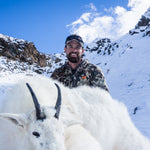





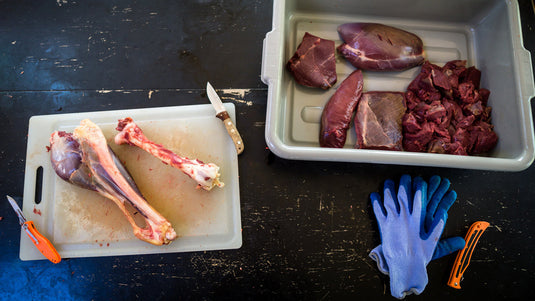
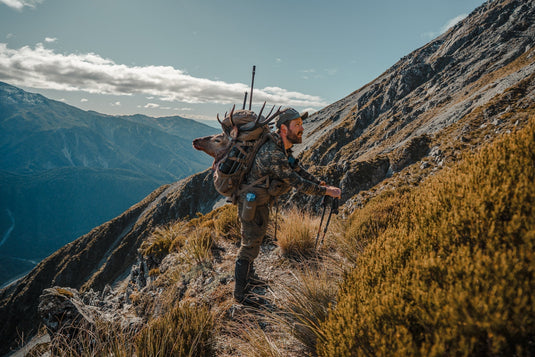
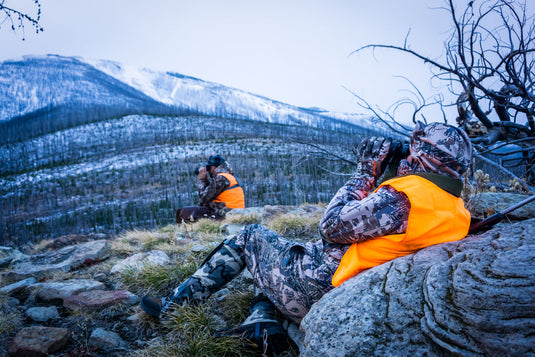
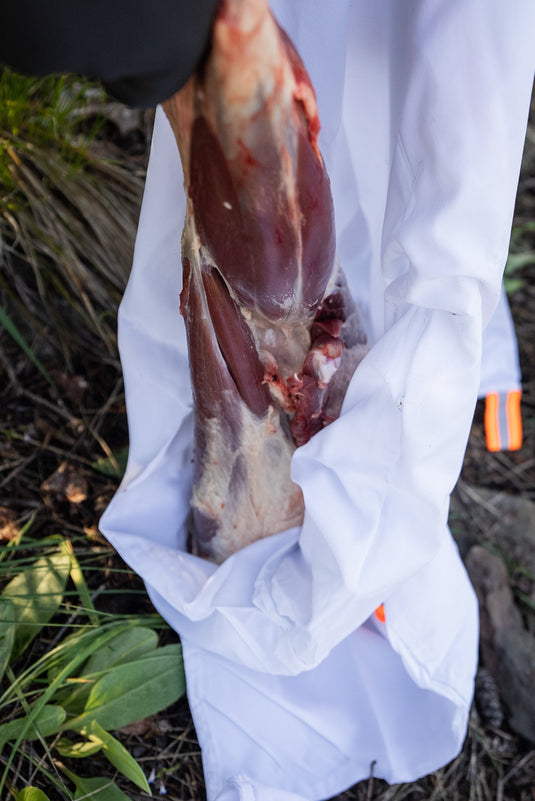
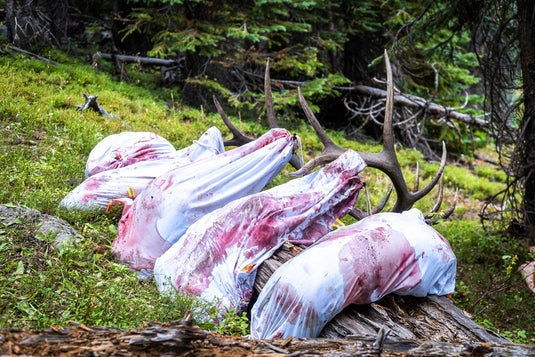
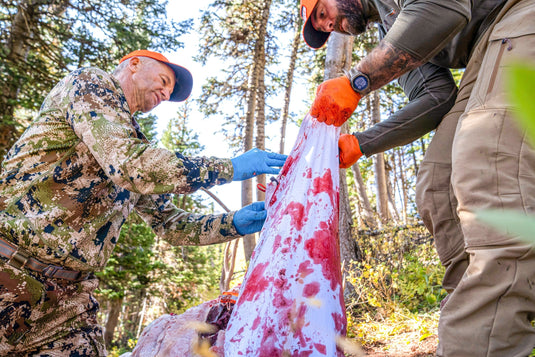
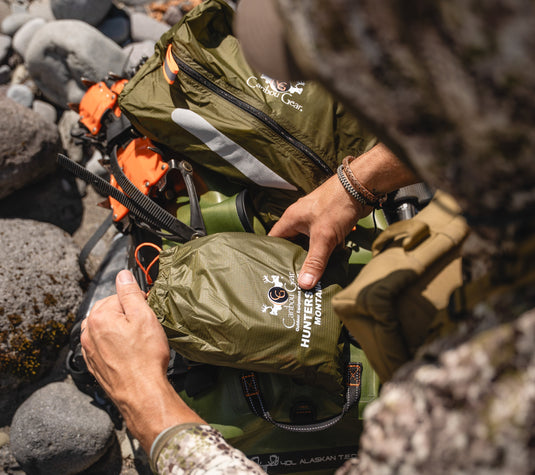
Very good article. Have read it several times.